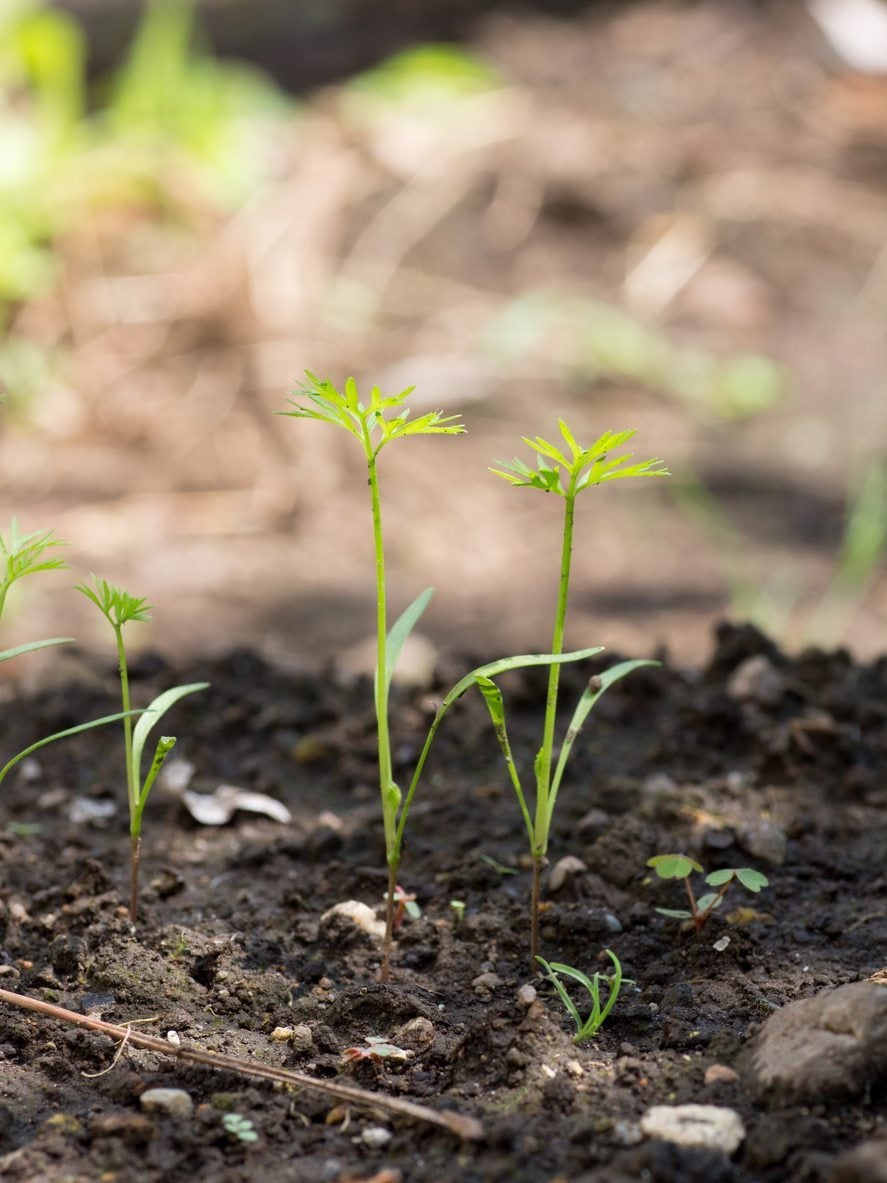

You either place carrot tops as described above directly into a cup or container of water. Right out of the gate, they can tap into the available nutrients. The advantage of this method is that carrots are going into the ground with roots under development. You can start carrots for transplanting in water instead of the soil.
#Carrot seedlings how to#
This video from the Grow and Bank Channel shows how to transplant carrots plants. Remember, plants depend upon their leaves to produce food and energy from photosynthesis. However, you also want to avoid burying any of the green tops. The result is off-flavors in your carrots. Exposed parts can turn green if they stay in the sun too long. As carrots get ready for harvest, they push up out of the soil. This condition occurs later in the growing season. Covering the top is important to prevent sunburning. Place the carrot into the soil, taking care to cover the entire carrot top. Then, cut about a one-inch piece of carrot below the greens. Start by preparing your transplant site in a container filled with a potting soil mix suitable for vegetables. If you have carrots with a bit of the top leftover, you have what you need to begin. Transplanting carrot tops is a clever way to get more from your store-bought carrots or garden-grown harvest. Carrots don’t handle competition well, giving them their spot when they’re young gives them an edge. Separating carrot seedlings early in the game reduces competition from other plants, including other carrots. John Hughes demonstrates the process.įrom the carrot’s perspective, there is another advantage in addition to temperature. Once separated, place each plant into a hole, adding soil around the root to keep the plant upright. Take care not to damage the seedling.Īll parts of the plant are delicate and easy to tear at this stage. To plant them, ease a single plant apart gently from the other plants. The advantage of taking this initial step is that you minimize the time that the seedlings are out of the soil and subject to drying out. The holes need only be deep enough to accommodate the roots. Larger carrot varieties, naturally, will need more room than smaller ones. Space holes about two to three inches apart, depending upon the carrot variety. Here’s a quick video of the process to consider before we go into more detail:īegin by preparing the ground for the seedlings. You want to do this when they’ve set down a root of at least equal size, but before they become entangled with other seedlings. You should wait until your carrot seedlings are about an inch high before transplanting. Get the seeds to grow your own carrots Handling Seedlings Carrots will grow well and reach their peak color. The ideal temperature for carrots is 60 to 70 degrees Fahrenheit. When you handle seedlings during transplanting, you’ll see why. The longer they stay in this early state of growth, the more vulnerable they are to damage. This slowdown can affect your chances for a successful harvest. Likewise, carrots grown in cooler temperatures around the 50 degrees Fahrenheit mark won’t grow fast. Even worse, it can cause unwanted flavors. Finding the Right TemperatureĬarrots grown in temperatures in the mid-80s degree Fahrenheit may not thrive, explains the University of California.

But sometimes even the best-laid plans fall short. Spring marks the best growing time since they are a cool season plant. Temperature is a critical factor for carrots.

You might consider this option to hit the ideal growing temperature for carrots. Transplanting allows you to jumpstart the growing season by planting carrot seeds indoors when it’s too cold to plant. However, you might consider transplanting carrot seedlings. They have a good germination rate, making this a viable practice. Rather, carrots are grown directly from seeds. Transplanting carrots is not the way you’ll usually grow them.


 0 kommentar(er)
0 kommentar(er)
